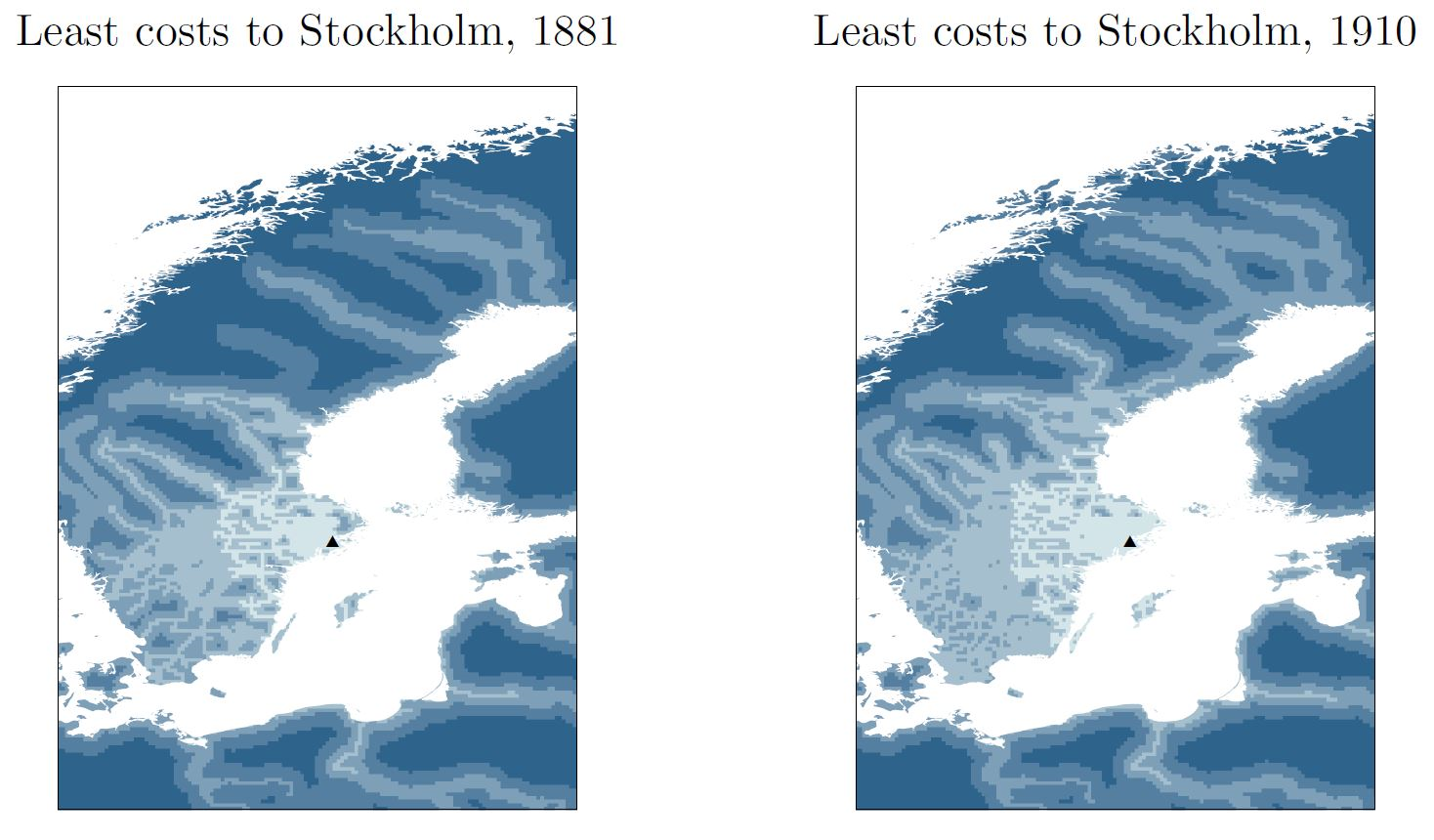
The role of rail transport in shaping the geography of economic development by integrating markets and fostering trade is widely recognised. But such infrastructure also enables the movement of individuals and the ideas they carry. What is the effect of increased individual mobility on the spatial diffusion of socially and politically salient ideas?
Recent events have sparked great interest in understanding how popular movements spread and organise to instigate political change. Discontent voiced on Twitter shaped protest activity which eventually brought down Mubarak during Egypt’s Arab Spring. In Russia, online social networks facilitated coordination during protests triggered by election fraud.
But transitions to democracy need not be tumultuous and violent. Sweden, along with other Nordic countries, today rank very highly on international indexes of democracy. This was not always so: at the turn of the twentieth century, Sweden was still highly politically unequal with a narrow political franchise. In 1911, however, universal suffrage was granted to all males. Universal female suffrage followed in 1919.
Key to this rapid and largely peaceful democratisation was a network of popular associations and social movements which had gained influence during the late nineteenth and early twentieth centuries. These organisations included trade unions, social democratic parties, temperance movements and non-state churches. By the early 1900s over 700,000 Swedes were members of at least one such organisation, out of a total population of around 5.5 million. What lay behind this broad-based grassroots mobilisation?
The answer may lie in a concurrent development which transformed Swedish society: the construction of a national railway system. Between 1881 and 1910, the railway network was extended from 6,000 km to over 14,000 km, which brought about substantial travel cost reductions.
Swedish social historians, such as Sven Lundkvist, have noted that personal visits by agitators and preachers were important channels for the spread of the new ideas. A key example is August Palm, a notable social democrat and labour activist, who made heavy use of the railways during his extensive ‘agitation travels’. And Swedish Nobel laureate and economist Eli Heckscher has written about the ‘democratising effect’ of travel in this period.
This paper is the first to test the hypothesised link between railway expansion and the success of these movements formally. I argue that by increasing individuals’ ability to travel, railways facilitated the spatial diffusion of membership in social movements.
I construct a rich new dataset from multiple sources, including historical railway maps, information on passenger and freight traffic, census data and archival information on social movement membership. With these data, I construct yearly measures of engagement in social movements for each of Sweden’s over 2,000 municipalities and relate these to railway connectedness. Figure 1 demonstrates a striking relationship: municipalities far from the nearest railway were much less likely to host a local social movement organisation.
Figure 1. Relationship between distance to railway and likelihood of social movement presence

Note: each point is the average of approximately 45 municipalities. Each subfigure plots the relationship between the distance to the nearest railway (logarithmic scale) against the proportion of municipalities with at least one social movement organisation present.
In the paper, I estimate these relationships formally using modern econometric techniques. My results show that following a ten per cent reduction in the distance to the nearest railway, municipalities were two percentage points more likely to see the entry of a social movement organisation. Subsequently, in such municipalities membership per capita grew 20 per cent faster than in the average municipality.
A key mechanism underlying this result is that railways reduced effective distances between places: the increased ability of individuals to travel and spread their ideas drove the spatial diffusion of movement membership. The dramatic reduction in travel costs is shown in Figure 2, using least-cost travel routes to Stockholm as an example. By 1910, many municipalities’ effective travel costs had fallen by over half compared to 1881.
Due to this effective shrinking of distance, established organisations were able to more easily spread to neighbouring municipalities. Railway expansion therefore aided the spatial diffusion process of these social movements.
Figure 2. Least-cost paths to Stockholm in 1881 and 1910

Note: maps illustrate the relative cost of the least-cost travel route to Stockholm (black triangle). Logarithmic scale: each shade is twice as costly as the nearest lighter shade.
Importantly, using station-level data on yearly passenger and freight traffic, I show that the positive impact of rail was only as a result of increased passenger flows – freight volumes had no impact. This suggests that it was the mobility of individuals that underpinned the spread of new ideas, not an acceleration of local economic activity more broadly.
My findings are important for our understanding of the role played by technology in shaping popular engagement in social movements during a critical juncture in Sweden’s democratisation period. The membership networks established as a result of this process of diffusion formed the foundations from which successful collective action could subsequently be launched. Identifying the importance of technology for the historical spread of democratic ideas therefore sharpens our understanding of contemporary political events.
♣♣♣
Notes:
- This blog post is based on the author’s paper Mobility and Mobilisation: Railways and the Spread of Social Movements, presented at the Economic History Society Annual Conference 2019 in Belfast.
- The post gives the views of its author, not the position of LSE Business Review or the London School of Economics.
- Featured image by The Library of Congress, under no known copyright restrictions
- When you leave a comment, you’re agreeing to our Comment Policy.
 Eric Melander is a PhD student in economics at the University of Warwick. His research interests include economic history and political economy.
Eric Melander is a PhD student in economics at the University of Warwick. His research interests include economic history and political economy.





